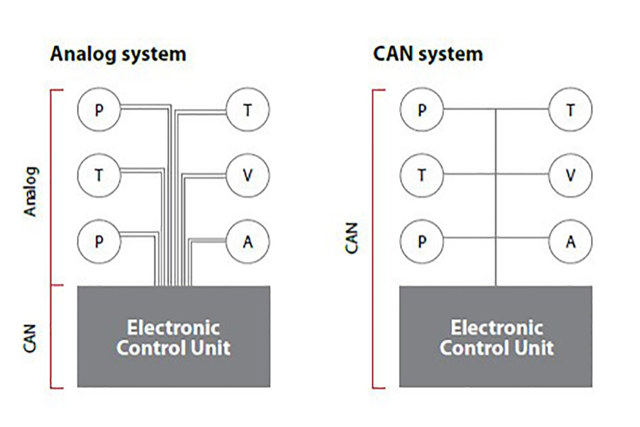CAN stands for Controller Area Network, a serial BUS system used for connecting devices in systems or sub-systems. The CAN network protocol came about in the mid-80s automotive industry, when the need to control different sub-systems of the vehicle, e.g. motor, steering, signaling, etc., emerged.
The CAN protocol was standardized in ISO 11898, and its use has become increasingly widespread, extending beyond the automotive industry into high-end, heavy-duty machinery for use in construction, materials handling, forestry, and agriculture.
How does CAN work?
CAN communication is best understood in the following way: instead of sending a message from component A to unit B, the message is broadcast. Each component is then able to listen for, collect, and act on information that is relevant for that particular component. The individual component actively listens and only acts when it is addressed.
If an emergency occurs, each individual component can send a relevant warning. In this way, other CAN components can identify the component the emergency call is coming from and take pre-programmed action.
CAN components communicate using a protocol, which can be compared to a language. The different protocols on the market are adapted to the applications in which they are used, and the devices that are connected by a CAN network are typically sensors, actuators, and other control devices. The CANopen protocol is particularly suitable for mobile applications.
The use of CAN increases the flexibility of a system. One of the most obvious benefits is reduced wiring. A single two-wire bus is all that is needed to connect several CAN devices. This reduces costs, simplifies mechanical design, and makes it easier to insert additional devices into a system.
The use of CAN-enabled devices is rapidly growing in heavy-duty on-highway and off-highway vehicles and machines with electro-hydraulic controls. However, before using CAN for CAN’s sake, it is important to know the advantages of CAN-enabled devices.
This document is provided for informational purposes only. Readers are responsible for making their own independent assessment of the information in this document.

